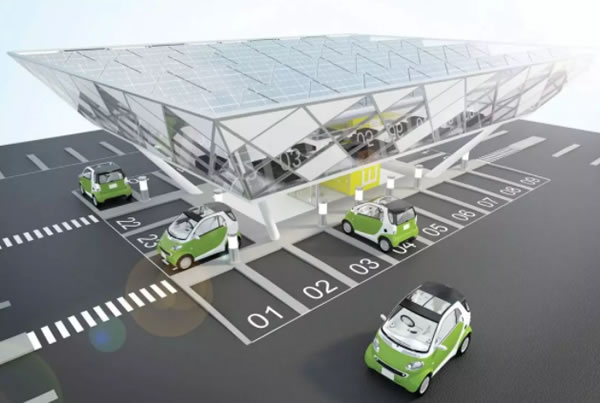As the number of new energy vehicles continues to grow, consumers are increasingly calling for ultra-fast charging technology for new energy facilities.
Taking China as an example, in 2018, China's sales of new energy vehicles was 1.25 million, and the number of new energy vehicles reached 3 million. However, the number of charging piles in the same period was only 730,000, and the ratio of vehicle piles was seriously insufficient.
At the same time, the charging rate of domestic charging piles is also very low, the current charging pile power is 15-120kW. Among them, slow charging does not exceed 40kW, and fast charging is mostly below 120kW.
Especially in the current background of difficulty in charging piles into the community, people's demand for fast charging is just as urgent as the demand for fuel stations for gas stations. But at present, due to technical constraints, ultra-fast charging technology has not yet been popularized.

Although the popularity of ultra-fast charging technology is still out of reach, at present, the 450kW charging station built in Jettingen-Scheppach in Bavaria has been put into trial operation. It is reported that the "Fast Charge" can provide 100km of battery life for electric vehicles in 3 minutes and provide 80% of electric power (SOC) for vehicles in 15 minutes. The new charging station uses the European CCS charging system.
At the same time, in order to attract more consumers and increase the sales of new energy vehicles, as a charging alliance created by the BMW Group, it has made a large-scale investment in the "Fast Charge" project. The current 450kW charging capacity is no longer The highest fast charging device.
Alliance researchers have been able to handle 920kW fast charging technology in vehicle testing. At the same time, in order to be able to take advantage of these extremely high charging capacities, the "Fast Charge" project is studying the technical requirements that need to be met in terms of vehicles and infrastructure.
At the same time, in order to solve the requirements of high-capacity fast charging and cooling, the "Fast Charge" project uses cooling HPC (high power charging) cables manufactured by Phoenix Contact. The coolant is a mixture of water and ethylene glycol. On this basis, in order to facilitate the refilling of the coolant, the cable cooling circuit is designed to be half open. Compared to oil-based sealing systems, this makes maintenance relatively simple.
In order to prevent the cooling hose from being squeezed when connected to the charging station, the cooling liquid is damaged, which affects the cooling efficiency. Phoenix Electric solves this problem with a specially developed wall pipe with a definite interface for power transmission, communication and cooling, and integrated tension relief.
Although all the problems that are emerging are being solved one by one, many of the problems still have technical bottlenecks. For example, how to make the effect of the coolant more efficient; how to configure the charge controller to charge different electric vehicles under a single infrastructure and the application problems in multiple scenarios.
In addition to the above-mentioned problems to be optimized, technical problems are more and more difficult to solve in a short time, including: magnetocaloric technology, electrochemical cooling, schukey machine application, thermoacoustic cooling, absorption cooling, etc. Technology with high service and maintenance requirements.
The industry believes that in addition to technical issues, the unification of market standards will be the top priority to hinder the implementation of super charging, because CHAdeMO and CCS standards involve vehicle research and development and supply chain market research and development.
Steel Structure Apartment,Prefabricated Steel Apartment,Steel Apartment,Structural Steel Apartment
Foshan Shengbang Steel Structure Co.,Ltd , https://www.sbsstructure.com